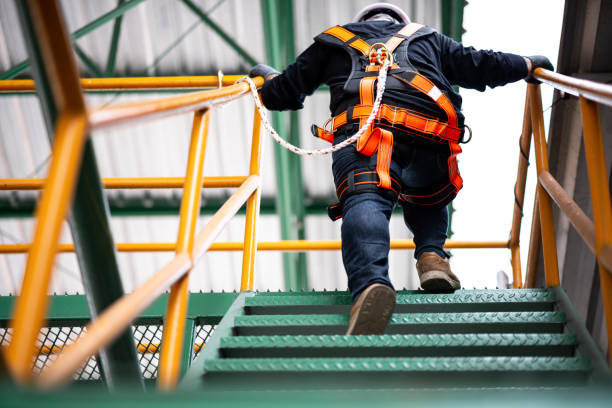The World’s Most Dangerous Jobs — Would You Dare?
Choosing a career is often about stability, growth, and passion. But for some, work is also about facing danger on a daily basis. Around the globe, there are professions that push people to their physical and psychological limits. These jobs combine courage, endurance, and skill — but also expose workers to extreme risks that most of us would never dream of taking on. The question is: would you ever dare to step into one of these roles?

Risk at the Core of the Job
The world’s most dangerous jobs share one common characteristic: risk isn’t an occasional visitor, it’s a permanent resident. Unlike office workers who might face ergonomic issues or retail employees dealing with difficult customers, workers in high-risk professions confront potentially fatal situations as part of their routine. Statistics from occupational safety organizations consistently show that certain industries maintain fatality rates dozens of times higher than the national average.
These jobs typically involve working with heavy machinery, hazardous materials, extreme weather conditions, or dangerous heights. The Bureau of Labor Statistics tracks workplace fatalities across industries, revealing that some professions experience injury rates that would shock the average worker. What makes these positions particularly challenging is that standard safety protocols, while helpful, can never completely eliminate the inherent dangers built into the work itself.
Deep-Sea Fishermen
Commercial fishing consistently ranks among the most dangerous occupations globally, with fatality rates that dwarf almost every other profession. Deep-sea fishermen face a perfect storm of hazards: unpredictable weather, heavy equipment, slippery surfaces, and isolation from immediate medical help. When storms hit, these workers can’t simply call in sick—they must navigate through conditions that would send most people running for shelter.
The physical demands are extraordinary. Fishermen work with massive nets, winches, and processing equipment while dealing with rolling decks and freezing temperatures. Hypothermia, drowning, and equipment-related injuries represent constant threats. Many fishing operations occur hundreds of miles from shore, meaning that even minor injuries can become life-threatening emergencies when medical evacuation isn’t immediately available. Despite modern safety equipment and communication technology, the ocean remains an unforgiving workplace that demands respect and constant vigilance.
Logging Workers
Forestry workers, particularly those involved in timber harvesting, face one of the highest occupational fatality rates in the workforce. The combination of massive falling trees, powerful cutting equipment, and remote work locations creates a uniquely hazardous environment. Chainsaws, while essential tools, pose significant risks even to experienced operators, while the unpredictable nature of falling timber means that split-second decisions can mean the difference between life and death.
Weather conditions add another layer of complexity to logging operations. Rain makes surfaces slippery, wind affects tree fall patterns, and extreme temperatures impact both equipment performance and worker safety. Many logging sites are located in remote areas where emergency medical services face significant delays in reaching injured workers. The physical demands of the job—lifting heavy equipment, working on uneven terrain, and maintaining focus during long shifts—require workers to stay in peak condition while managing multiple safety considerations simultaneously.
Construction at Extreme Heights
High-rise construction workers, tower climbers, and other professionals working at extreme heights face unique psychological and physical challenges. While safety harnesses and fall protection systems have dramatically improved over the decades, the fundamental risk of working hundreds of feet above ground remains unchanged. Wind conditions that barely register at ground level can create dangerous situations for workers on tall structures.
Beyond fall risks, construction workers at height often deal with heavy materials, electrical hazards, and coordination challenges with ground crews. Communication becomes critical when teams are spread across multiple levels of a construction site. Weather conditions can change rapidly at height, with workers experiencing different conditions than those at ground level. The mental fortitude required to perform detailed work while managing height-related stress adds another dimension to these already challenging positions.
Why People Still Choose These Jobs
Understanding the motivations behind choosing dangerous work reveals a complex mix of economic, personal, and cultural factors. Many high-risk professions offer compensation packages that significantly exceed average wages, particularly for workers without advanced degrees. The premium pay reflects both the risks involved and the specialized skills required to perform these jobs safely.
Beyond financial incentives, many workers are drawn to the unique challenges and sense of accomplishment these jobs provide. There’s a distinct pride in mastering skills that few people possess, whether it’s reading ocean conditions, understanding forest dynamics, or working confidently at extreme heights. These professions often foster strong camaraderie among workers who share common risks and experiences.
For some communities, particularly in rural or coastal areas, these jobs represent generational career paths and cultural traditions. Families have worked in fishing, logging, or construction for decades, passing down not just skills but also deep respect for the work itself. The connection to natural resources and the tangible results of their labor provide satisfaction that many office-based professions cannot match.
Geographic factors also play a role, as these jobs often provide stable employment in areas where other career options may be limited. Workers appreciate the variety and outdoor nature of the work, even when acknowledging the risks involved.
The world’s most dangerous jobs continue to attract dedicated professionals who understand and accept the risks involved. While technology and safety protocols continue to evolve, reducing some hazards, the fundamental nature of these professions means that danger will always be part of the equation. For those who choose these careers, the combination of good compensation, personal satisfaction, and the challenge of mastering difficult skills outweighs the risks—though the decision to pursue such work should never be taken lightly.




